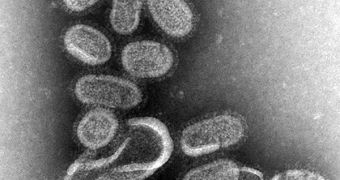For many decades, researchers have tried to answer a very straightforward question – why is it that the flu strikes and causes outbreaks like clockwork? A variety of answers have been proposed to solve this riddle, but a new research reveals that the answer may be simpler than anyone thought.
Some of the previous explanations for flu outbreaks included valid proposals, such as for example the fact that people tend to have a weaker immune system during the coldest months of the year.
Others have attributed the seasonal occurrence of flu outbreaks to the fact that people spend a lot of time in the cold. But the new study found a more inconspicuous culprit – absolute air humidity.
According to the team behind it, the flu spreads like wildfire in areas that feature dry air. The concept of absolute humidity refers to the amount of water (in the form of vapors) that exists in the air over any specific location.
Though this idea is not new, no research team has ever approach this type of study from the particular perspective the Oregon State University experts did. All previous studies focused on relative humidity.
This concept refers to how close the air is to being saturated with water. As it turned out, it's far less reliable to report to flu outbreaks using relative, rather than absolute, humidity, LiveScience reports.
Researchers conducted the new study with funds from the US National Institutes of Heath (NIH) . The team was led by climatologist Jeffrey Shaman, from Oregon State, and epidemiologist Marc Lipsitch, who is based at the Harvard School of Public Health.
Together, the two analyzed and cross-referenced flu and weather data spanning no less than three decades. They then constructed a computer models, and introduced in it all available historical patterns of how the flu spread seasonally.
Absolute humidity was used as the main control parameter in the new model. Most importantly, it controlled the infection's reproductive number, which is the average number of people an already-infected person can contaminate.
“We found that we could reproduce the seasonal cycle of influenza very nicely in basically the whole country,” Shaman says of the team's reaction when analyzing the results of the computer model.
“If you had a real snap of cold, dry air, it was typically increasing the likelihood that you would have an outbreak. It could potentially be used in the future to make some sort of flu forecast,” he adds.
The team now plans to focus its efforts on determining the influence that geography plays in flu outbreaks.
“Each year, influenza moves around the globe. It's not an exact pattern, but there are consistent ways it moves from the tropics to temperate regions,” the scientist reveals.
“If we can fold humidity into an understanding of that, it might give us a better sense of how and why influenza moves around as it does,” Shaman concludes.

 14 DAY TRIAL //
14 DAY TRIAL //